




BY CYDNEY HALPIN
April is Jazz Appreciation Month (JAM). Originally intended as a catalyst to encourage people of all ages to actively participate in jazz, JAM heralds and celebrates the extraordinary heritage and history of jazz. I encourage you to celebrate and do something “jazz-centric” this month by attending a live concert event or lecture, reading a book devoted to a jazz great; purchasing a CD or LP, Googling an artist or song you’re interested in finding out more about … the possibilities and opportunities are endless.
However you chose to celebrate, actively take part in the preservation and promotion of jazz and share your interest and enthusiasm of America’s great art form with someone else—perhaps introducing a child, your neighbor, or a colleague to jazz for the first time.
“Jazz music is America’s past and it’s potential, summed up and sanctified and accessible to anybody who

learns to listen”—Wynton
Marsalis
There is money to be won! NJJS’s 2025 Juried Scholarship Competition—which will award a $1,000 and a $500 prize in three categories: Jazz Instrumental Performance, Jazz Vocal Performance, and Original Composition—is accepting entries. This year marks our first year with the additional category of Jazz Vocal Performance, thanks to the generosity of board members Mike Katz and Jackie Wetcher.
The Submission deadline has been extended to Friday, April 11, 2025, 11:59PM. Visit njjs.org/competition for complete details.
The competition is open to all students currently enrolled in a New Jersey college undergraduate music program, as well as to Jersey residents currently enrolled in an out of state college undergraduate program.
Proof of residency is required for Jersey applicants in out of state schools.
Along with the cash award, winners will receive guidance, mentorship and the opportunity to perform with an industry professional, and coverage in Jersey Jazz. This competition will be judged by our prestigious panel of professional musicians, educators and industry leaders comprised of: Don Braden » World class tenor saxophonist, flutist, composer and educator.
Mariel Bildsten » Trombonist, bandleader, sidewoman, and educator.
Ted Chubb » Princeton University Lecturer of Music—Jazz Trumpet, composer, educator, and arts administrator.
Jason Olaine » Vice President of Programming, Jazz at Lincoln Center.
The Board and I would like to thank Nan Hughes Poole and NJJS Board Members Cynthia Feketie, Mike Katz, and Jackie Wetcher for their generous support of this initiative.
If you’d like to support the growth of our prize offerings, donations can be made via our website njjs.org/donate. Please note “Scholarship Fund” where indicated. Donations can also be mailed: NJJS, 382 Springfield Ave., Ste. 217, Summit, NJ 07901. Don’t hesitate to contact me at pres@ njjs.org if you have any questions.
Don’t miss out on spectacular music at our Jersey Jazz LIVE! concerts. Plan to join us Sunday, April 6th, as we celebrate Jazz Appreciation Month featuring the Chuck Redd Duo. Vibraphonist Redd and pianist John DiMartino are back for an encore performance—and one you don’t want to miss! The Rising Stars opening act will showcase the Min-Yang Qin Quartet. For more information about this concert and these artists, click here: njjs.org/chuck-redd-and-johndimartino-at-april-jersey-jazz-live.
Additional funding for this concert has been provided by jazz advocate and NJJS member Lynne Mueller. The Board and I thank her for her generosity and support. Jersey Jazz LIVE! Is held at Madison Community Arts Center, 10 Kings Road, Madison, NJ. There is FREE street parking.
Please note: our new ticket prices go into effect for this show: $15 Members, $20 Non-Members, $5 Child/ Student w/ID. Doors open at 2:30 p.m.. These events are well attended, plan accordingly. For advance ticket sales: ticketleap.events/tickets/ new-jersey-jazz-society/jersey-jazzlive-chuck-redd-duo-1844968033
If you’d like to support a Jersey Jazz LIVE! concert—in part or in full—or our Rising Stars/Opening Act initiative—providing performance opportunities for the next generation of jazz musicians, please contact me at pres@njjs.org or at 973.229.0543.
Save the Date! Sunday, May 4th at 3:00 p.m., for Jersey Jazz
LIVE! featuring the Larry Fuller Trio. The other members of the trio are Lorin Cohen on bass, and Carmen Intorre, Jr., on drums. The Rising Stars/Opening Act with showcase the Metuchen High School Jazz Sextet. For more information on these artists please see page 10. For advance ticket sales: ticketleap.events/ tickets/new-jersey-jazz-society/ jersey-jazz-live-larry-fuller-trio
Congratulations to Jazz Arts
Project as it celebrates its 20th year with a “JAM packed” month of events (see page 15) culminating with its Gala Performance and Fundraiser April 30th honoring NJJS favorite: cornet, trumpet, and flugelhorn player Warren Vaché. For tickets: jazzartsproject.org/april
In the spirit of jazz appreciation, Metuchen Jazz(friendsofmetuchenarts.org ) will host a free event at the Metuchen Library Wednesday, April 30th, 7 p.m. “T. K. Blue presents Planet Bluu.” The event will be a concert “plus.” T.K. will talk about NEA Jazz Master Randy Weston and Count Basie trombonist Benny Powell with whom he worked for many years. Registration on Eventbrite.com required.
Celebrate JAM by enjoying this issue of Jersey Jazz in its entirety and by attending as many incredible musical events taking place throughout the month as possible: Michael Feinstein, Enlow Recital Hall/Kean Stage 4/25; Nat Adderley Jr., Grunin Center 4/27; William Paterson University Jazz Room, various artists 4/6, 13 and 27; and the Yellowjackets, Bell Theater 4/24.
There’s still time to donate. Our “Charting the Future … with YOU!” annual appeal campaign kicked off in December and we need you to join with us in this collaborative effort.
Many of you have already contributed to this annual campaign we are grateful! If you haven’t donated, please consider a tax-deductible gift today. We need your help to continue our performance and educational initiatives. You can donate anytime online at njjs.org via the red “Donate” button. Or by mail to: NJJS, 382 Springfield Ave., Summit, New Jersey, 07027. Please make check payable to NJJS.
We’re counting on you to partner with us and keep this uniquely American art form swingin’. You make it all possible! April hath put a spirit of youth in everything.—William Shakespeare
BY SANFORD JOSEPHSON

The results of this year’s Charles Mingus Festival & High School Competition, held in February at The New School, are in, and, not surprisingly, students from Jazz House Kids, JTole, and Newark Academy are prominent among the winners.
The Jazz House Kids Big Band, directed by trumpeter Nathan Eklund, won awards for Best Specialized Big Band; and Outstanding Brass Section; the Jazz House Kids Ambassadors, directed by tenor saxophonist Mike Lee, was named Outstanding Rhythm Section, Combo; the JTole Saxophone Ensemble was selected as the Outstanding Frontline Combo; and the Newark Academy Big Band, “Chameleon” won Outstanding Rhythm Section, Big Band. The latter two bands are directed by alto saxophonist Julius Tolentino, Found-
er and Director of JTole Music and Jazz Director at Newark Academy.
These organizations also accounted for several of the individual awards:
» Outstanding Student Arranger: bassist Sam Konin, Jazz House Ambassadors, for “Weird Nightmare”
» Outstanding Soloists: Alto Saxophone, Anish Alur, JTole Saxophone Ensemble; Piano, Ben Collins-Siegel, Jazz House Kids/Newark Academy; Bass, Sam Konin, Jazz House Kids; Vocalists, Zuri McCune, Jazz House Kids, and Akshra Yagnik, Newark Academy; Trombone, Ezra Rzetelny, Newark Academy; and Tenor Saxophone, Ben Sherman, Jazz House Kids.
» $30,000 Scholarship
Winner: Tenor saxophonist Ben Sherman, Jazz House Kids
Alur, Collins-Siegel, and Konin have all appeared as part of the
Rising Stars opening acts at NJJS’
Sunday Jersey Jazz LIVE! concerts in Madison. In addition to the local students, I’d like to point out that the Mingus Spirit Award was presented to the Newton South High School Big Band from Newton, MA. Our Rising Star in this issue is Princeton student Alex MacArthur, a graduate of Newton South, whose program is directed by Lisa Linde (see page 31)
Also, congratulations to trumpeter Warren Vache and journalist/ educator Gilda Rogers, who are being honored as Jazz Heroes by the Red Bank-based Jazz Arts Project at its April 30th International Jazz Day Performance and Fundraiser at the Triumph Restaurant & Brewery in Red Bank. Vache is a long-time NJJS favorite and performed at the 50th Anniversary concert in October 2002. More recently, he appeared at our May 2023 Jersey Jazz LIVE! concert with guitar-
ist Diego Figueiredo. Rogers is Jersey Jazz’s newest Contributing Editor. See her Jazz History feature about tenor saxophonist Gene Ammons on page 15
Women’s History Month ended March 31, but the New York City Performing Arts Library’s exhibit, “Rhythm is My Business: Women Who Shaped Jazz” runs through June 13. There are some noticeable omissions—such as pianist/vocalist Barbara Carroll and guitarist Emily Remler—but try to catch this exhibit. Of particular interest is the all-star band that accompanied trombonist Melba Liston on Melba Liston And Her ‘Bones, her only album as a leader. Among the band members: Benny Green, Al Grey, Benny Powell, Slide Hampton, Ray Bryant, and Kenny Burrell.
Also of note: The segment from Jazz is My Native Language, the documentary about pianist/ bandleader Toshiko Akiyoshi.
Founded in 1972, The New Jersey Jazz Society has diligently maintained its mission to promote and preserve America’s great art form—jazz. To accomplish our mission, we produce a monthly magazine, Jersey Jazz ; sponsor live jazz events; and provide scholarships to New Jersey college students studying jazz. Through our outreach program
Generations of Jazz, we provide interactive programs focused on the history of jazz. The Society is run by a board of directors who meet monthly to conduct Society business. NJJS membership is comprised of jazz devotees from all parts of the state, the country and the world.
You become an integral part of the NJJS community, and the history and future of jazz
Access to 11 Digital Issues of our Award Winning Jersey Jazz Magazine
— Featuring Articles, Interviews, Reviews, Events and More Discounts to our Jersey Jazz LIVE! Sunday Concerts
Discounts at NJJS Sponsored Concerts & Events.
FREE Listing on NJJS.org “Musicians List” with Individual Website Link
FREE Gig Advertising in our Monthly eBlast
THE RECORD BIN
Visit www.njjs.org or email info@njjs.org for more information on our programs and services
A collection of used CD’s & LP’s available at reduced prices at specific events and through mail order njjs.org/shop
JOIN NJJS
Family/Individual $45
(Family includes to 2 Adults and 2 children under 18 years of age)
Family/Individual 3-Year $115
Musician Member $45 / 3-Year $90 (one time only, renewal at standard basic membership level.)
Youth $15 - For people under 21 years of age. Date of Birth Required.
Give-A-Gift $25 - Members in good standing may purchase unlimited gift memberships. Applies to New Memberships only.
Fan $75 - $99
Jazzer $100 - $249
Sideman $250 - $499
Bandleader $500+
Corporate Membership $1000
Members at Bandleader level and above and Corporate Memberships receive special benefits. Please contact Membership@njjs.org for details. The New Jersey Jazz Society is qualified as a tax exempt cultural organization under section 501(c)(3) of the Internal Revenue Code, Federal ID 23-7229339. Your contribution is tax-deductible to the full extent allowed by law. For more Information or to join, visit www.njjs.org
Magazine of the New Jersey Jazz Society
VOLUME 53 • ISSUE 04
org
Jersey Jazz (ISSN 07405928)
is published monthly for members of The New Jersey Jazz Society
382 Springfield Ave., Suite 217, Summit, NJ 07901 973-229-0543 • info@njjs.org
Membership fee is $45/year.
All material in Jersey Jazz, except where another copyright holder is explicitly acknowledged, is copyright ©New Jersey Jazz Society 2025. All rights reserved. Use of this material is strictly prohibited without the written consent of the NJJS.
Editorial Staff
EDITOR
Sanford Josephson, editor@njjs.org
ART DIRECTOR
Michael Bessire, art@njjs.org
CONTRIBUTING PHOTO EDITOR
Mitchell Seidel, photo@njjs.org
CONTRIBUTING EDITORS
Bill Crow, Joe Lang, Vincent Pelote, Gilda Rogers, Jay Sweet
CONTRIBUTING PHOTOGRAPHERS
Jenny Anderson, Brittany Duncan, Ari S. Freedman, Miles Okazaki, Gilles Toucas
WEBMASTER
Christine Vaindirlis
WEBSITE DESIGN
Prism Digital
DIRECTOR OF ADVERTISING
Cydney Halpin, advertising@njjs.org
ADVERTISING RATES
Full Page: $135, Half Page: $90, 1/3 Page: $60, 1/4 Page: $30
For reservations, technical information and deadlines contact advertising@njjs.org or visit njjs.org/Magazine/Advertise . Make a payment online at njjs.org/advertise via the red Submit Payment button, or via check made payable to NJJS, 382 Springfield Ave., Suite 217, Summit, NJ 07901.
New Jersey Jazz Society, Officers 2024
PRESIDENT
Cydney Halpin, pres@njjs.org
EXECUTIVE VP vicepresident@njjs.org
TREASURER
Mike Katz, treasurer@njjs.org
VP, MEMBERSHIP membership@njjs.org
VP, PUBLICITY
Sanford Josephson, sanford.josephson@gmail.com
VP, MUSIC PROGRAMMING
Mitchell Seidel, music@njjs.org
RECORDING SECRETARY
Irene Miller
CO-FOUNDER
Jack Stine
IMMEDIATE PAST PRESIDENT
Mike Katz
DIRECTORS
Jay Dougherty, Cynthia Feketie, Paul Flexner, Pete Grice, Carrie Jackson, Caryl Anne McBride, Robert McGee, James Pansulla, Stew Schiffer, Elliott Tyson, Jackie Wetcher
ADVISORS
Don Braden, Mariel Bildsten, Ted Chubb, Al Kuehn, Jason Olaine
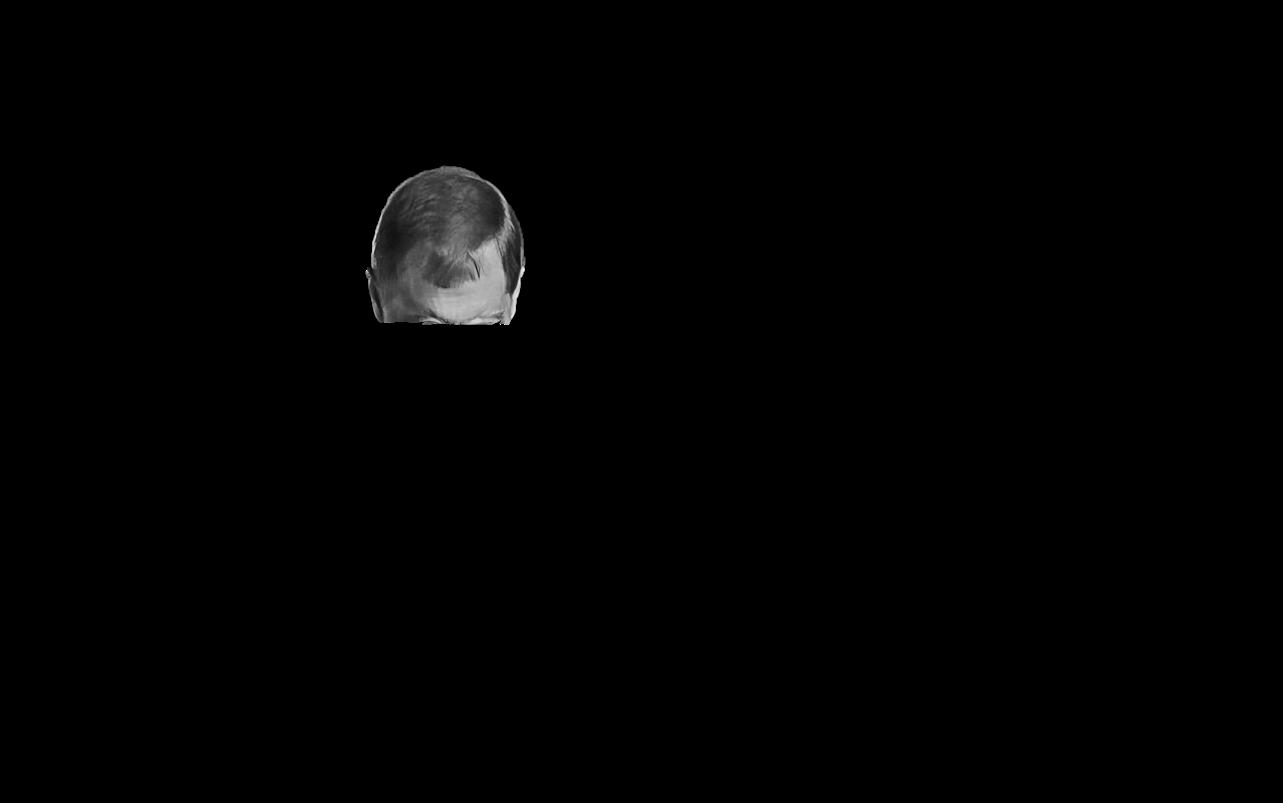
Goal of the Larry Fuller Trio:
‘To Uplift People with the Spirit and Energy of Swinging’
“A Wicked Jazz Pianist Who Deserves More Attention”
Pianist Larry Fuller has always loved musicians who “play at an incredible level but still remain accessible to an audience.” Some examples among pianists, he said, are Oscar Peterson, Monty Alexander, Cedar Walton, and Ahmad Jamal. That will be the musical essence of Fuller’s performance when he leads a trio on Sunday, May 4, at the New Jersey Jazz Society’s Jersey Jazz LIVE! concert in Madison, NJ. His music, he said, will hopefully “uplift people with the spirit and energy of swinging.
“We’ll be playing a program of
Great American Songbook selections, along with some jazz classics, and a few originals as well as selections from Stevie Wonder to Duke Ellington to Oscar Peterson.” Joining him will be bassist Lorin Cohen, who has toured and recorded with Monty Alexander; and drummer Carmen Intorre, Jr., who was nominated for a Grammy in 2011 as co-producer of organist Joey DeFrancesco’s HighNote album, Never Can Say Goodbye: The Music of Michael Jackson. Fuller grew up in Toledo, Ohio, and was mentored by saxophonist
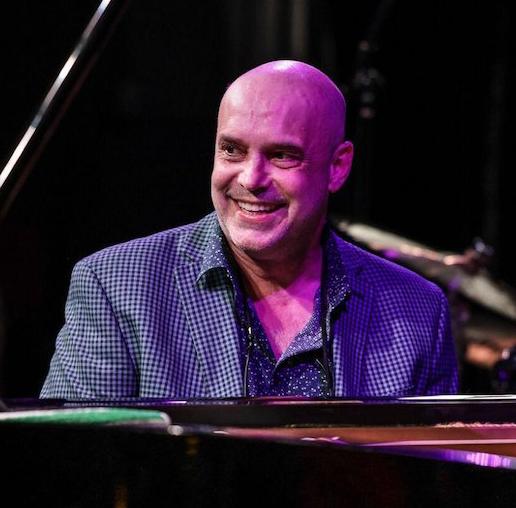
Candy Johnson, who played with Duke Ellington and Count Basie as well as rhythm & blues pianist Bill Doggett. Throughout his career Fuller has performed and recorded with a long list of jazz luminaries including drummers Jeff Hamilton and Lewis Nash, bassist Ray Brown, guitarist/vocalist John Pizzarelli, tenor saxophonist Houston Person, and vocalist Ernestine Anderson. He also performed at NJJS’ 50th Anniversary concert in October 2022.
In 2000, when Fuller had the opportunity to play with Brown, “it was,” he said, “like getting to play with one of my heroes, having listened to him for so many years. I learned so much watching how Ray led his group and also how he presented music, which was at such a high level but always somehow accessible to the audience.”
On Fuller’s 2019 Capri Records album, Overjoyed, he led a trio with bassist Hassan Shakur and drummer
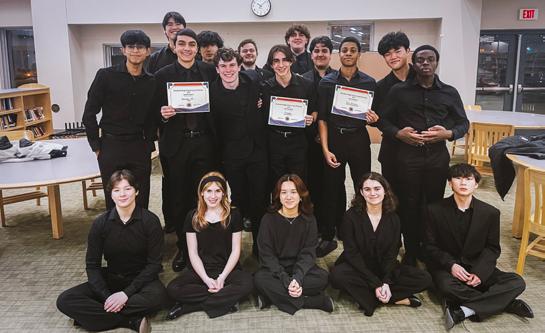
Lewis Nash. “I’ve known Hassan Shakur for quite a long time,” he said. “He is a disciple of the Ray Brown school of bass playing, and, given my association with Ray Brown, we share an affinity for the same style of swinging music and the blues that Ray epitomized.”
Nash was honored last November at the annual Giants of Jazz concert at the South Orange Performing Arts Center. Said Fuller, “It was a thrill to play with the great Lewis Nash, one of the great drummers of our time.”
In his review of Overjoyed, Pierre
Giroux of Audiophile Audition, described Fuller as “a wicked jazz pianist who deserves more attention . . . He is a player of expressive versatility, with a vigorous uncluttered style.”
The Larry Fuller Trio will be preceded by the Metuchen High School Jazz Sextet, part of the Metuchen High School Jazz Ensemble. In 2024, the Jazz Ensemble earned third place in the New Jersey Association of Jazz Educators’ statewide competition. The members of the sextet are: alto saxophonist Caleb Han, tenor saxo-
phonist Daniel Choi, pianist Daniel Afkhami, bassist Kayla Tak, trumpeter Alistair Fawcett, and drummer Tyler Nicholson. The group is guided by Metuchen High School Director of Bands John Messenger.
The Madison Community Arts Center is located at 10 Kings Road in Madison, NJ. The Jersey Jazz LIVE! concerts begin at 3 p.m. Admission is $15 for NJJS members and $20 for non-members. Student admission is $5 with valid ID. There will be light refreshments for purchase. To order tickets in advance, log onto ticketleap.events/tickets/ new-jersey-jazz-society/jerseyjazz-live-larry-fuller-trio
: Funding for Jersey Jazz Live! has been made possible, in part, by funds from Morris Arts through the New Jersey State Council on the Arts, a partner agency of The National Endowment for the Arts.


Adderley, Jr.
His ‘First Musical Loves’ are Motown and Tunes by Burt Bacharach and Hal David
When Nat Adderley, Jr. was 11 years old, he wrote and arranged a song entitled “I’m On My Way”, part of his uncle Cannonball Adderley’s 1967 Capitol Records album, Why Am I Treated So Bad! The band on that recording included Adderley, Jr.’s father, Nat Adderley, on cornet, Joe Zawinul on piano, Victor Gaskin on bass, and Roy McCurdy on drums.
Reviewing the album for AllMusic, Thom Jurek pointed out that “The better moments include the Latin-tinged
‘I’m on My Way’ written by nephew Nat Adderley, Jr. and featuring a
beautifully lyrical solo by his father.”
As an adult, Nat Adderley, Jr., now 69, was initially attracted more to rhythm & blues than jazz and once told JazzTimes’ Evan Haga that his “first musical loves” were Motown and Burt Bacharach and Hal David. He spent 25 years as the Music Director for R&B vocalist Luther Vandross, but after Vandross passed away in 2005, Adderley, Jr. decided to return to his jazz roots as a pianist and bandleader.
A documentary on Vandross, Never Too Much, was screened at the 2024 Sundance Film Festival and
premiered on CNN in January 2025. It is now streaming on HBO Max. Reviewing it for The Guardian, Ben Beaumont-Thomas pointed out that Vandross’ “gift for extemporization puts him in line with Sarah Vaughan and Ella Fitzgerald as much as R&B or pop singers.” Adderley, Jr. added: “I’m happy about how the documentary came out, and I’m thrilled to be seeing Luther getting his props.”
On Sunday, April 27, Adderley, Jr. will lead a quartet playing a variety of jazz and pop standards as part of the Jazz on a Sunday Afternoon concert series at the Jay and Linda Grunin Center for the Arts in Toms River, NJ.
Adderley, Jr. has recently recorded his first jazz album as a leader, although it hasn’t been released yet. He’s still refining the list of songs to be included and exploring distribution options. But it will include “tunes I’ve been playing around these parts the last few years.” A typical Adderley, Jr. live set will always contain an R&B-inspired performance of a Bacharach/ David tune, often “The Look of Love”, and something from the Cannonball catalog, such as Duke Pearson’s “Jeanine” from the 1960 Riverside album, Them Dirty Blues. And, of course, a jazz interpretation of a Vandross hit.
Adderley, Jr. frequently performs

at Tavern on George, the main venue of the New Brunswick Jazz Project. Describing one of his performances there, the NBJP’s Virginia DeBerry once told Jersey Jazz that he “brings his everything to every per-
“ A TYPICAL ADDERLEY, JR. LIVE SET WILL ALWAYS CONTAIN SOMETHING FROM THE CANNONBALL CATALOG. ”
formance, and we appreciate that.”
The quartet at Grunin will include tenor saxophonist Tommy Morimoto, bassist Chris Berger, and drummer Greg Bufford. Berger will also be on the album along with Dwayne “Cook” Broadnax on drums.
: The New Jersey Jazz Society is a proud supporter of the Jazz on a Sunday Afternoon series, which is made possible through funding from the Wintrode Family Foundation and the Ocean County College Foundation. The Nat Adderley, Jr. concert begins at 3 p.m. on Sunday, April 27, in the Gia Maione Prima Foundation Studio Theatre (Building 12). The Jay and Linda Grunin Center for the Arts is located on College Drive on the campus of Ocean County College. For information and tickets, log onto grunincenter.org or call (732) 255-0500
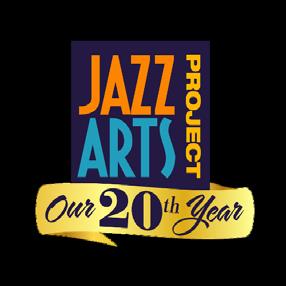
pril 9th 7pm
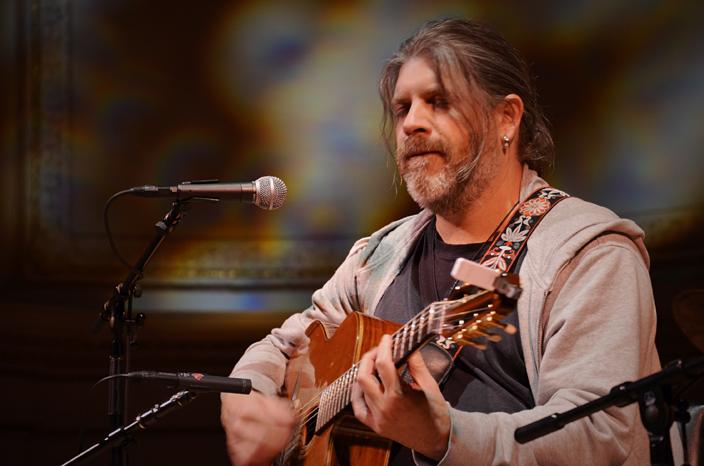

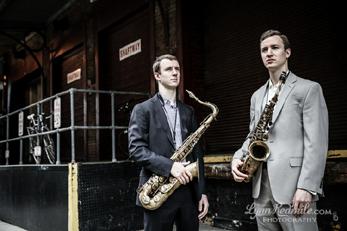

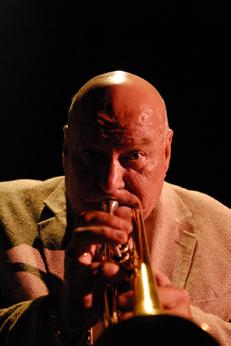

His Repertoire of Soul-Stirring Albums Was a Sublime Mix of Ballads and a Showcase of Sensational ‘Blowing’.
BY GILDA ROGERS
April is Jazz Appreciation Month (JAM) and who better to JAM with than “The Boss,” tenor saxophonist, Gene Ammons— that “Boss”—who first claimed it as a coveted jazz moniker a long time ago. Eugene Ammons was born in Chicago on April 14, 1925. His 100th Birthday this month celebrates the sound of his big boss horn.
During the early 1960s, Ammons’ boss repertoire of soul-stir-
ring albums, Boss Tenor (Prestige: 1960), followed by Boss Tenors: Straight Ahead from Chicago (Prestige: 1961), and Boss Tenors in Orbit (Verve: 1962)—the latter two with alto saxophonist, Sonny Stitt—was a sublime mix of ballads and a showcase of sensational “blowing.”.
Ammons was born with musical DNA in his blood. His father was boogie-woogie pianist Albert Ammons. In an interview, Gene once
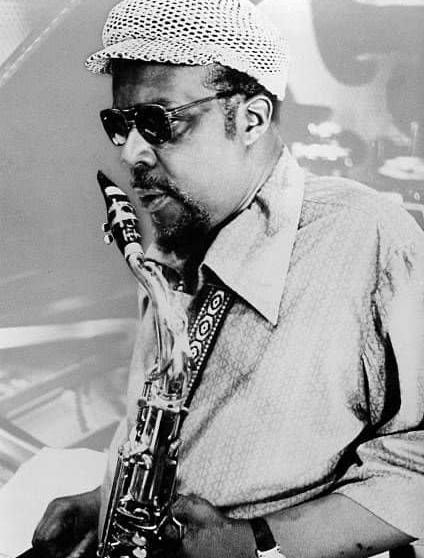
said that when he first heard, “The Prez,” Lester Young, blow his horn, he knew what he wanted to do. He was also influenced by Ben Webster. His musical journey started under the tutelage of Captain Walter Henri Dyett, the famed Musical Director at Chicago’s DuSable High School, where Ammons was one of many enormous talents touched by Dyett—from vocalist Dinah Washington to tenor saxophonist Clifford Jordan. It was here that Ammons started to tweak his ax, delivering the sound he’d come to be known for. The Walter Henri Dyett Papers, which include the instructor’s master thesis: “Development of Rhythm Mastery,” certainly were key to Ammons’ development.
Ammons first gained name recognition when, at 19, in 1944, he joined the Billy Eckstine Band. Eckstine crowned him with the nickname “Jug,”
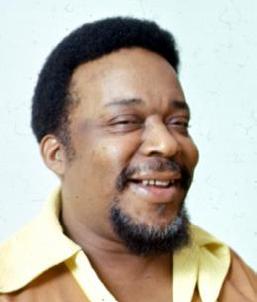
because of the size of his head. After leaving Eckstine in 1947, Ammons did a brief stint with the Woody Herman Band before coming into his own and forming the Gene Ammons Quintet, which garnered his first hit, “Red Top,” a play on his wife’s nickname. His musical prowess continued to make headway, but Dan Morgenstern,
the late jazz historian, described Ammons best when he said, “His sound was synonymous with soul.”
Also tune in and listen to some of his early recordings from the ‘50s, such as The Happy Blues (Prestige: (1956) or the razor-sharp harmony on Woofin’ and Tweetin’ (Prestige: 1958), with Ammons’ big boss horn leading the way. The Gene Ammons All-Stars was an amalgamation of jazz greats, performing on various albums, such as The Big Sound (Prestige: 1958), that featured John Coltrane on alto
saxophone, Paul Quinichette on tenor, and Pepper Adams on baritone.
This camaraderie, shared among Ammons and his fellow musicians, provided an economic engine that kept them working and was a testament to the acclaimed work produced from a stellar lineup that also included alto saxophonist Lou Donaldson, bassist Paul Chambers, and trumpeters Art Farmer, and Donald Byrd, who put their own individual stamp on America’s Original Sound.
Like many jazz musicians of this
“
time, Ammons was plagued by his addiction to heroin, and that led to his arrest in 1958. He served two years in an Illinois penitentiary, for illegal possession of drugs. That was followed by another drug conviction in 1962, with Ammons serving a seven-year stint in a Joliet, IL, prison.
Prestige Records kept his music circulating while he served time and finely crafted and executed his return to the music scene upon his release from prison in 1969. He hit the ground running. The Boss is Back was released that same year. The cover photograph of the album says it all, with Ammons exiting an open door of an airplane, as if just arriving, waving to his fans. And to assure them of his well-being, he covered the Anthony Newley/Leslie Bricusse tune “Feeling Good,” with lyrical precision.
One of his biggest fans, Kas Sampson, owner and operator of
Rafiq’z Haircutters in Roselle, NJ, saw Ammons in 1969 at the Key Club in Newark, upon his release from prison. “Ammons had a big burly sound to his horn,” said Sampson, who loved the horn battle between Stitt and Ammons on the 1971 Prestige album You Talk That Talk! and his recording of “Canadian Sunset”, on the Boss Tenor album.
Ammons’ signature tenor sax with those rhythmic bursts, when teamed with the Hammond organ, was a recipe made for foot tapping. He made four albums with organist
Sonny Phillips. On Nellie Lutcher’s “He’s a Real Gone Guy,” from the 1969 Prestige album, Brother Jug, with Phillips on the organ, Ammons blows with such swinging swag that it is irresistible not to dance.
Sliding into the ‘70s with the changing tide of music, Ammons’ horn imported a measurement of
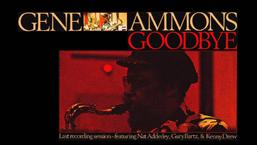
Gene Ammons’ last album, Goodbye, was described by the BBC as a “fitting finale ... a poignant end piece.”
funk while not losing his classic groove. His last studio recorded album was Goodbye (Prestige:1974). He goes out swinging on the tune “Sticks,” with Kenny Drew on piano and showcases his lyrical dynamism, one last time on “Alone Again Naturally,” the 1971 tune made popular
by Gilbert O’Sullivan. The intensity of Ammons’ horn is blistering.
In a review of the album, the BBC pointed out that, “Often, last albums or sessions can be disappointingly anticlimactic. This one, though, makes a fitting finale, encapsulating much that was good about Ammons. Ironically, the very last track he recorded was the atypical Gordon Jenkins ballad ‘Goodbye’. With the focus firmly on Ammons at his most restrained and soulful, it makes a poignant end piece.”
Ammons died on August 6, 1974, at the age of 49.
: Gilda Rogers is Executive Director of the T. Thomas Fortune Cultural Center in Red Bank, NJ, and teaches African-American History at Brookdale Community College in Lincroft, NJ. She was recently named a “Jazz Hero” by The Jazz Arts Project in Red Bank.


Michael
“I’ve Always Believed That the Music of the American Songbook is One of Our Most Treasured Cultural Legacies”
BY SANFORD JOSEPHSON
Throughout his career, Tony Bennett released 85 albums and 83 singles. So, selecting songs for a Tony Bennett tribute is a daunting task. As vocalist/pianist Michael Feinstein prepares for his April 25th “Because of You: My Tribute to Tony Bennett” concert in Kean Stage’s Enlow Recital Hall, he acknowledged that, “Choosing personal favorites of Tony’s is no small feat because he sang so many songs.”
In an email interview, Feinstein
explained that, “I start by making lists of songs. Then, I go over them repeatedly and find ones that I can feel most comfortable performing. Whenever I am given the opportunity to perform songs from Tony’s repertoire, I try to find a place where I can make them a little bit different, so they’ll have surprises in them and won’t sound exactly like the way Tony sang them, because nobody wants an imitator.”
Feinstein and Bennett never worked together professionally, but
there were at least two occasions when they sang together spontaneously: “When I had my club, Feinstein’s at the Regency, Tony came to one of my opening nights and got up to sing with me; there was also an event in Washington, DC, where I was at the piano accompanying him while he sang, ‘I Left My Heart in San Francisco’.”
Liza Minnelli used to sing with Bennett occasionally when she went to see him perform. “He would always get her up and out of the audience to sing a song,” Feinstein
said, “and it was always in his key. So, one night, I was playing for Liza, and she got Tony up to sing, ‘Maybe This Time’ as a duet, and she said, ‘Tonight, we are doing it in my key!’ You’ve never heard Tony reach for high notes. It was fantastic. It was funny and fun, and he nailed it.”
Feinstein met Bennett in 1983, backstage at a Rosemary Clooney benefit concert. “Being a young kid who knew about his world, his music, and songwriters in it,” he recalled, “it was extremely natural for us to be-
“ FROM THE MOMENT
MET,
TONY WENT OUT OF HIS WAY TO TAKE ME TO DIFFERENT PLACES. ”
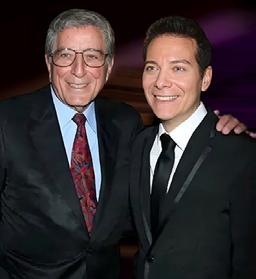
Tony Bennett and Michael Feinstein
come friends. From the moment we met, Tony went out of his way to take me to different places, to restaurants and clubs, to introduce me to different performers and different kinds of music. It was incredibly generous to somebody who had very little success in show business at that point.”
Bennett once told DownBeat Magazine that, “I always wanted
a jazzman with me. For me, having jazzmen with me means I never get stale.” Having jazz musicians in his ensemble, Feinstein said, “is very important to me because, like Tony, it does inspire me and keeps it absolutely fresh.”
The ensemble at Kean will be: alto saxophonist Kurt Bacher, tenor saxophonist Sam Dillon, trumpeters Brian Pareschi and Alphonso Horne, pianist (and Musical Director) Ted Firth, bassist David Finck, and drummer Mike Klopp. Feinstein and pianist George Shearing released an album on the Concord label in 2005 called Hopeless Romantics, a collection of songs by Harry Warren. Reviewing it for AllMusic, Aaron Latham pointed out that Feinstein and Shearing “decided to focus their attention specifically on Warren’s more romantic songs ... This approach is a perfect
fit for Feinstein, who has crooned thousands of American standards in his subdued cabaret style. The bonus this time around, though, is to have famed jazz pianist Shearing provide the accompaniment.”
Said Feinstein: “It was quite a thrill to record and perform with George. He and his wife, Ellie, first came to hear me at the Algonquin Hotel in 1986, and we became fast friends. George was a singularly brilliant musical mind, unlike any other pianist in jazz history. He was endlessly inventive, as are many jazz greats. He never played anything the same way twice. The level of his technique was staggering, how he would spontaneously interpolate these classical themes and the reharmonizations that he seemed to do instantly.
“When I recorded with George, in what turned out to be his last album, he was starting to lose a bit of his

Feinstein said recording and performing with George Shearing was, “quite a thrill ... every time I hit a note, sang a note, hit a downbeat of something, he was always right there with me.”
memory, yet he was so spot on during those sessions ... every time I hit a note, sang a note, hit a downbeat of something, he was always right there with me. We felt these songs together so much so that it was absolutely perfect.”
Shearing died six years later
at the age of 91. Some of the Harry Warren songs featured on Hopeless Romantics were: “You’re Getting to Be a Habit with Me”, “At Last”, and a song closely associated with Shearing, “September in the Rain”.
In 2007, Feinstein founded the Great American Songbook Foundation “because I’ve always believed that the music of the American Songbook is one of our most treasured cultural legacies—yet, for many years, I saw it fading from mainstream awareness. These songs, written by legendary composers like George and Ira Gershwin, Cole Porter, Irving Berlin, and so many others, are not just entertainment; they are an essential part of our history, reflecting the motions, stories, and spirit of America across generations.”
One of the Foundation’s most important programs, Feinstein said, is its Songbook Academy, “our annual
intensive for young musicians. Each year, we welcome some of the most talented high school vocalists from across the country to study and perform this music under the guidance of world-class mentors. It’s been incredible to watch so many of our alumni go on to remarkable careers in the arts.”
When asked if there are any young vocalists on the scene today who he thinks might establish the kind of relationship with him that he had with Tony Bennett, Feinstein responded that, “I can’t give a specific name,” but “I’m always doing what I can to support and make suggestions, if they are asked for or wanted by younger vocalists. There is a lot of great talent out there ... These songs are indestructible, and so I always have hope for young people not only to discover this music, but to interpret it in fresh new ways; and that’s the wonderful thing about jazz and the wonderful
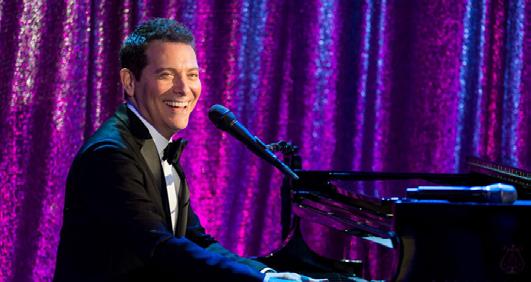
thing about our world now because there has been such a melding of so many different musical styles.”
When he was 21 years old, Feinstein, now 68, spent six years as Ira Gershwin’s assistant. “Ira and I used to talk about Tony often,” Feinstein recalled. “Ira would tell me this story from the late 1950s when Tony was encouraging Ira to get this new contraption called a stereo, where there
was sound coming out of two speakers, and Ira, notably, said, ‘I don’t need a stereo, Tony. I have two ears.’”
: Enlow Recital Hall is located at 215 North Ave. in Hillside, NJ. The Michael Feinstein concert begins at 7:30 p.m. on Friday, April 25.
For more information or to order tickets, log onto kean.vbotickets.com/ events or call (908) 737-7469.

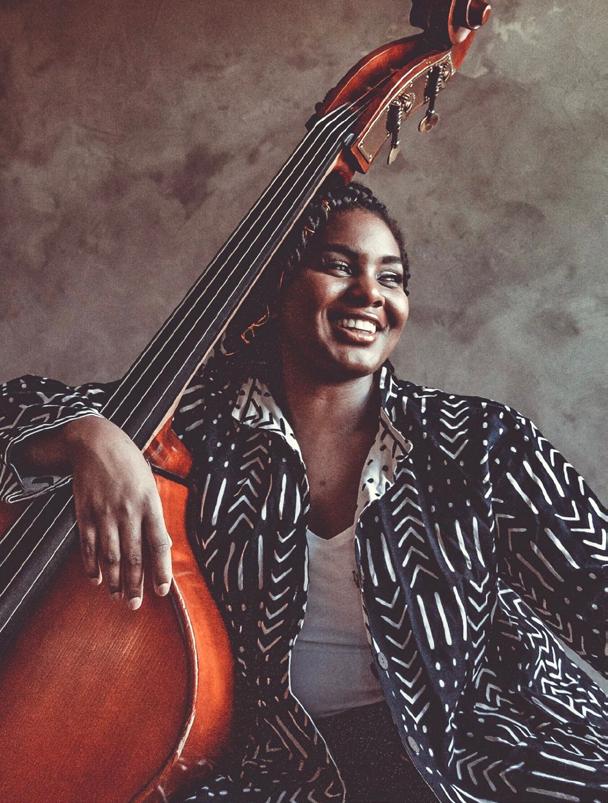
Endea Owens’ Blend of ‘GrooveBased’ Music and Jazz
“Being Part of (Jon Batiste’s) Band and the Show is Truly a Blessing, and I’m Very Grateful for It”
BY JAY SWEET
Bassist Endea Owens’ 2023 debut album, Feel Good Music (Bass Bae Music), highlights her skills with tight arrangements, intricate compositions, and syncopated percussive elements that seamlessly interlock. The album’s accessible, yet sophisticated, approach has made it a hit among casual listeners and discerning jazz critics.
In a recent Zoom interview while she was traveling on the road, Owens revealed that she is working on a re-
cording with rapper Juicy J as well as a new project of her own. Speaking of the latter, she said, “I’m taking some risks groove-wise and harmonically. It’s a more mature sound, but still a dance album. I’m collaborating with some serious musicians to create something unique. The sound will be a fusion of different styles, but not your typical fusion. I’m aiming for a jazz and house music blend with a Cab Calloway vibe. It’s going to be something fresh and unexpected.
The album is set to drop in August.”
On Friday, April 18, Owens and her band, The Cookout, will perform at the South Orange Performing Arts Center. “I’ll be playing some of my favorite tracks from my first album,” she said, “songs I love and could play all day. These pieces connect with the audience, and I think they’ll resonate with everyone, especially those familiar with the Nubian sound. After that, I’ll be showcasing completely new material. I plan to bring a sextet for this show, or possibly a septet. Usually, I perform with two horns, a full rhythm section, and a vocalist, but for this performance, I might even have two vocal-
“ GROWING
ists to add an extra layer to the sound.”
Owens’ deep connection to “groove-based” and jazz music comes as no surprise, considering her upbringing in Detroit, the home of Motown Records and the birthplace of celebrated jazz musicians such bassist Paul Chambers, guitarist Kenny Burrell, and the Jones Brothers (pianist Hank, trumpeter/bandleader Thad, and drummer Elvin). Reflecting on her roots, she recalled that, “Growing up in Detroit was amazing. It’s a soulful, special city with many major historical figures, like Malcolm X. There’s so much history. My friends and I grew up in a strong-minded commu-
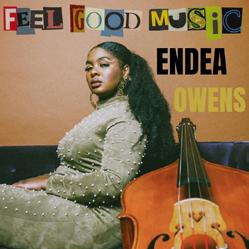
nity because strong-minded people raised us. We always had our compass set—north, onward, and upward.”
Like many double bassists, Owens’ first instrument was not the bass. “My first instrument was the piano,” she said. “I played by ear and performed
AMAZING. IT’S A SOULFUL, SPECIAL CITY WITH MANY MAJOR HISTORICAL FIGURES. ”
at a lot of gradations. I can still play, but I’m not as good as I was back then. I can still back up a vocalist, but I’m not playing as I used to. My second instrument was the violin, and I was always the first chair. I still play it, and I competed in many national competitions as a kid and won them! That was a beautiful experience.
“After that, I picked up the bass and tried the tuba for a bit. My orchestral director needed a bass player for the orchestra. He heard me playing one of Mozart’s symphonies by ear, just looking at the bass parts, and I was like, ‘Nobody’s playing this bass. I can do this.’ So I played it, and he made me switch to bass. I wasn’t thrilled initially, especially since I was the first chair violinist, getting all the attention. But he told me, ‘Either play the bass, or you’ll get an F for the class.’ So, I played bass.”
That moment led Owens to her
first mentor, Marcus Belgrave, and her first gig at 15. She continued her education at Michigan State University and had her first official bass lesson with Rodney Whitaker.
Owens naturally transitioned to New York City to study and immerse herself in the larger music scene. “Before I moved to New York,” she recalled, “I auditioned for Juilliard and the Manhattan School of Music. I made it to the final round at Juilliard but didn’t do well in ear training, so I went to Manhattan. It wasn’t the right fit, and I dropped out within three months. In November, while ‘window shopping’ for a new school, I saw Dr. Aaron Flagg (Juilliard Chair and Associate Director of Jazz Studies) and thanked him for the opportunity to audition. He told me the auditions were still open and encouraged me to apply again. I did, and I got in. It

was a great experience that taught me to be even more serious about my craft. Juilliard is tough, but it’s a great catalyst for growth—if you go there with intention and focus, you become a better musician and artist.”
One of the defining moments of Owens’ still-young career was her
work with Jon Batiste’s Stay Human band, the house band for The Late Show with Stephen Colbert. She is also featured prominently on Batiste’s album We Are (Verve Records), which won Album of the Year at the 64th Annual Grammy Awards, earning Batiste nine nomi-
nations and five wins. Reflecting on her connection to Batiste, she said,
“I met Jon Batiste through Joe Saylor, the drummer in his Stay Human band. Joe saw me playing at Smalls Jazz Club at 4 a.m. and later told Jon about me. A couple of months later, I got a call from an unknown number at the airport. It was Jon Batiste. We talked about music, life, and our views on humanity for about an hour without mentioning a gig. Two months later, I got a call to sub for The Late Show in August 2019. I gave it my all, and they asked me to stay for a few more months. Eventually, they offered me a contract, and it’s been almost six years now.
“Being part of the band and the show is truly a blessing, and I’m very grateful for it. In the current climate of the music and TV industries, having a steady, long-lasting gig is rare. Even more amazing is being
part of a team—everyone, from the boss to the staff, brings their best every day with high professionalism and no excuses. It’s taught me to be a more detailed musician and more serious about my craft. It’s been a great experience, and yes, Stephen Colbert sings sometimes!”
Beyond her musical endeavors, Owens is deeply involved in philanthropy. Her desire to help others led to the creation of Community Cookout, a project she started in July 2020. “I’ve always wanted to be involved in philanthropy” she explained, “It’s one of life’s greatest gifts to be able to give back. On July 4, 2020, I started the Community Cookout. My goal was to give out 125 meals, and we gave them away on 125th Street between Lexington and Park, an area known for its struggles with drugs, and where people often avoid eye contact. That day was special because we ran out of
food, and I gave people money out of my pocket. Many people were moved, crying and hugging me, and it felt incredible. After that, I decided to continue the monthly cookouts for a while. I’ve since done cookouts at the Edinburgh Jazz Festival in Scotland, in Germany, and, most recently, in Tucson, Arizona, where I partnered with James Beard and award-winning chefs. We’ve fed thousands of people and played free concerts for the community. It’s been an amazing experience, and I’m truly grateful for the opportunity to give back.”
: The Endea Owens and The Cookout concert will be performed at 7:30 p.m. on Friday, April 18.
The South Orange Performing Arts Center is located at One SOPAC Way in South Orange, NJ. For more information or to order tickets, log onto sopacnow.org or call (973) 313-2787.
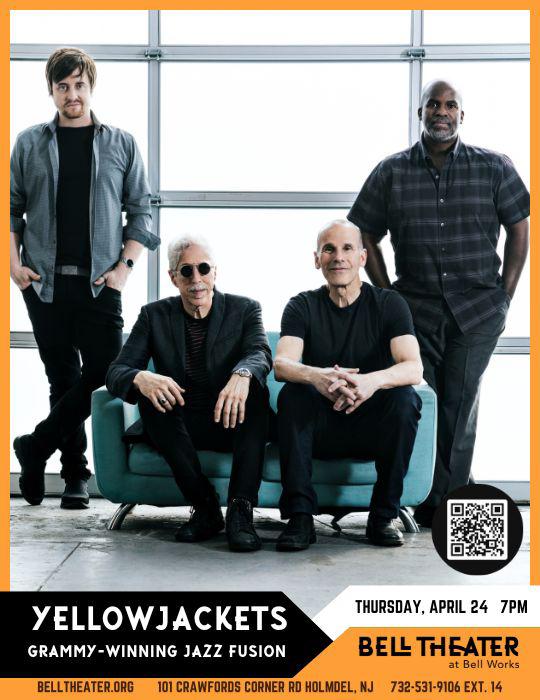
“When I Try to Pick a Cover, I Want it to be Obscure, Something That People Wouldn’t Necessarily Expect Me to Do”
BY SANFORD JOSEPHSON
Vocalist Shayna Steele considers herself a “multi-genre” artist. And, why not? She has performed in Broadway musicals, sung backup for Bette Midler and Rihanna; and often sings as a guest with symphony orchestras, in addition to performing as a jazz, blues, and soul solo artist..
When she takes the stage at Mah-
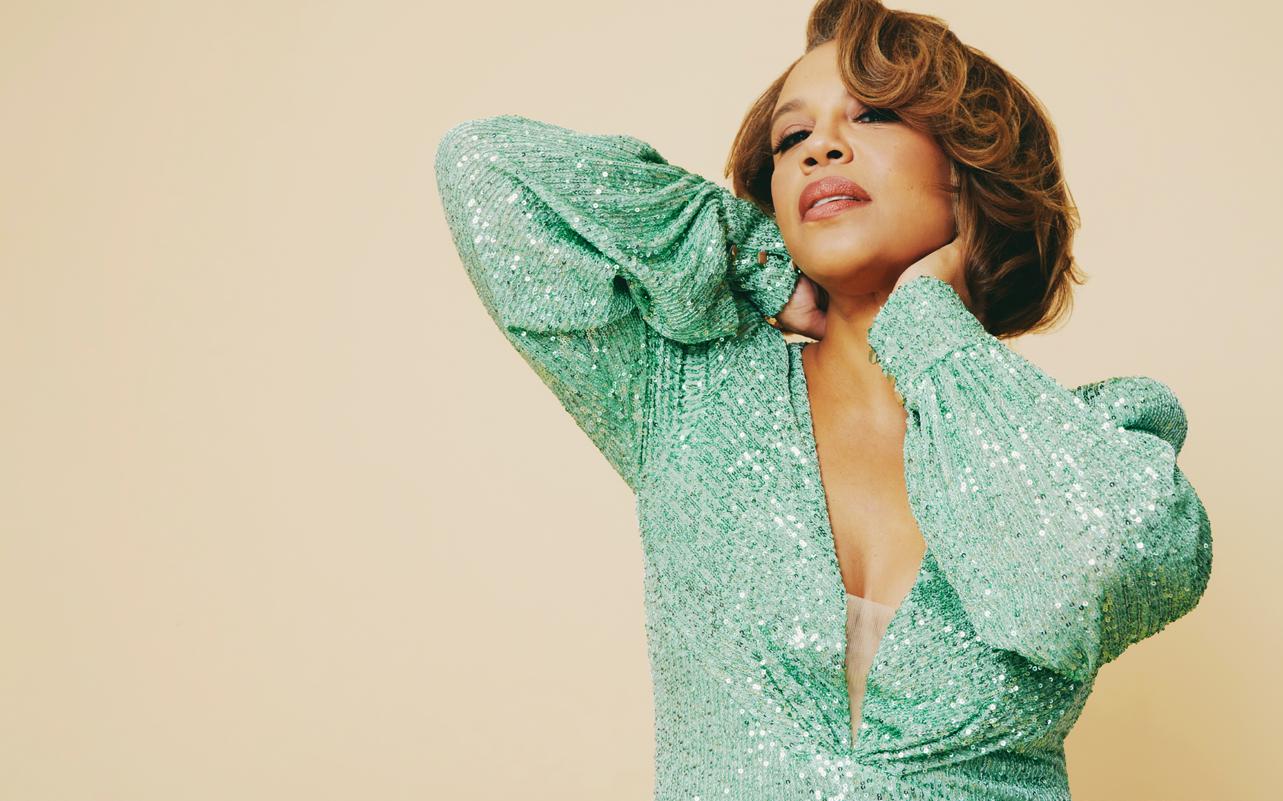
wah, NJ’s Berrie Center for Performing and Visual Arts on Saturday, May 3, the audience can expect “a performance that’s specifically for them. I do not do cookie cutter performances. I’m a storyteller. I’m really big on not just singing high notes and trying to do vocal gymnastics. I’m about really telling a story and bringing people in.”
Her husband, jazz pianist David Cook, will join her at the Berrie Center along with drummer Ross Pederson, guitarist Al Street, and bassist Bobby Wooten. Cook and Street are on her 2023 Ropeadope album, Gold Dust, which includes three original compositions co-written with Cook along with Ray Charles’ “I Believe to My Soul” and her interpretations of Cole Porter’s “You’d Be So Nice to Come Home To” and Stevie Nicks’ “Gold Dust Woman”.
“When I try to pick a cover,” she said, “I want it to be obscure, something that people wouldn’t necessarily expect me to do. Everyone’s expecting me to cover an Aretha Franklin tune or Chaka Khan or Whitney Houston or whatever. They’re amazing vocalists, who I grew up listening to. I love Ray Charles, but I really didn’t want to pick something that had been overdone. The only other
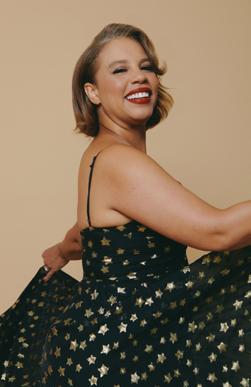
cover I had heard of the song was Donny Hathaway’s, so we did a little homage to Donny Hathaway’s arrangement in this arrangement.
“I’ve known Cole Porter’s music since I was a kid,” she said. “This arrangement is all David’s. Every time we play it live, everybody gets really nervous. It’s a monster of an arrangement, but it’s a hell of a tune.” The performance on the album features a solo by saxophonist Donny McCaslin.
As for “Gold Dust Woman”, when
the decision was made to include it on the album, Steele thought, ‘How do I Shayna-fy a Stevie Nicks vocal?’ But I really feel we nailed it.” It made the “Best 50 Cover Songs of 2023” on covermesongs.com, finishing at Number 35. Wrote CMS’ Patrick Robbins: “Can you imagine Shayna Steele’s treatment of ‘Gold Dust Woman’ being the closing track of Rumours? Of course, you can’t. There’s nothing mysterious about this performance; from the opening notes, Steele is punching and punching hard. If Stevie Nicks was using a silver spoon to dig that grave, Steele is operating a crackedout steam shovel. She’s in control, she’s in charge, and if anyone’s going to rock on, it’s going to be her.”
Last September Steele and her band performed at the Monterey Jazz Festival. “It was probably one of the greatest moments of my career, to be part of such a wonderful lineup at
this historic jazz festival.” she said, “being around all these wonderful musicians—a lot I’ve known for years, and some I’ve admired from afar.”
Through the years, the 49-yearold Steele has guested with a variety of jazz musicians and groups, and many have been guests with her band. In addition to McCaslin, the list includes drummer Nate Smith, trombonist Alan Ferber, trumpeter Chris Botti, bassists Marcus Miller and Christian McBride, Steely Dan, and Snarky Puppy. Miller and McBride were on her 2015 Ropeadope album, Rise, which included covers of Mose Allison’s “Everybody’s Crying Mercy” and Bill Withers’ “Grandma’s Hands”.
When Steele appeared at the San Jose Jazz Winter Fest in February 2020 (just before the pandemic), DownBeat’s Yoshi Kato praised her versatility. “Switching between originals, R&B favorites, and jazz stan-
SUNDAYJAZZ
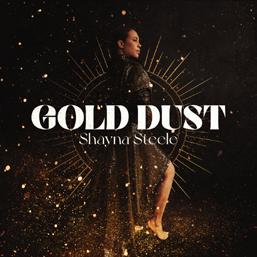
Shayna Steele’s album, Gold Dust, contains a David Cook arrangement of Cole Porter’s “You’d Be So Nice to Come Home To” with a saxophone solo by Donny McCaslin.
dards,” he wrote, “Steele’s set was a study in contrasts and dynamics. Bill Withers’ ‘Grandma’s Hands’ was transformed from an intimate anthem at its beginning to a near-whispered prayer.
‘Gone Under’, originally Steele’s collaboration with Snarky Puppy, got the
seated crowd gyrating in their chairs.”
Trombonist Ferber is someone who has been particularly important to Steele’s development as a singer.
“I’ve worked with him since the beginning of my solo career,” she said. “He’s played with me, and we’re talking about doing some really cool big band stuff.” Being onstage with Steele, Ferber said, “is an electrifying experience. She elevates everybody’s game. And, the same is true writing arrangements for her. Her command of the time, groove, and emotion makes me inspired to try elevating her already skyhigh artistry to an even higher level.”
: The Berrie Center is located at 505 Ramapo Valley Road on the campus of Ramapo College of New Jersey.
The Shayna Steele concert is at 8 p.m. on Saturday May 3. For more information or to order tickets, log onto ramapo.edu or call (201) 684-7844.
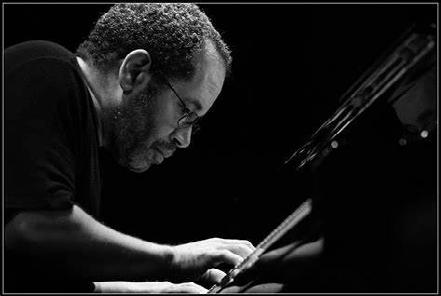
Sunday April 27 • 3:00pm
the complete performance schedule, visit grunincenter.org.



Rising
“An Excellent Music Student, a Hard Worker Who Was Very Disciplined and Motivated”
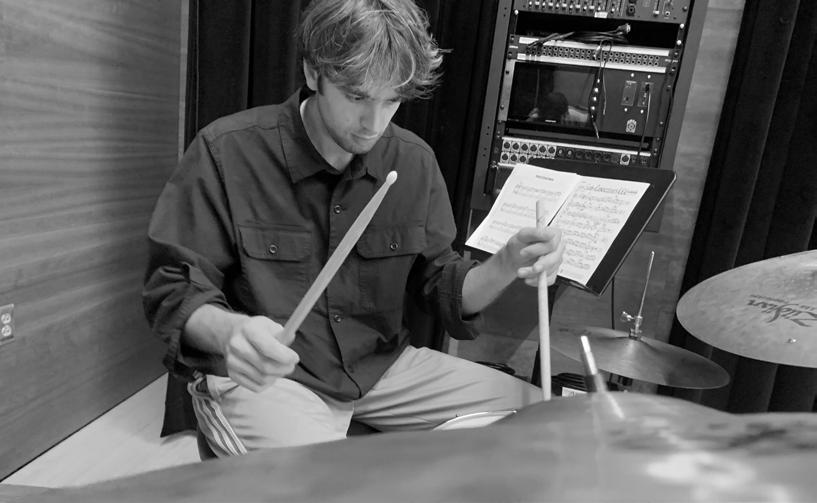
Although he took trumpet lessons when he was about eight or nine years old, Alex MacArthur “always liked the energy of drums. I liked that you’re always playing.” So, when he got to Newton (MA) South High School, he played the drums by himself after big band rehearsals. “My parents eventually got me a drum set,” he said, “and I would be playing and listening to Art Blakey, learning the drums that way. I started in sophomore year by myself and then in senior year I was playing in the big band on drums and trumpet.”
The 22-year-old MacArthur learned about jazz mainly from his parents. “My mom had a random Duke Ellington record,” he recalled, “and my parents had other records so we would listen to jazz.” But he also developed his musical skills from his high school Band Director, Lisa Linde. “She’s very charismatic,” he said, “very commit-
ted to the program. She made us submit a lot of things to competitions. We got to go to New York City to play in the Mingus High School Competition.”
Linde remembers MacArthur as “an excellent music student, a hard worker who was very disciplined and motivated. I was so surprised to hear him play drums his senior year! I had no idea he had been practicing them on his own, and I immediately recruited him from the trumpet section within the jazz band to be a part of the rhythm section. He took on the most difficult piece we were playing that year and gave an excellent performance. We would not have achieved and accomplished what we did without his hard work!”
MacArthur’s first drum lessons were during his sophomore year at Princeton University. His first drum instructor was Vincent Ector, and now he’s studying with Jerome Jennings. Currently a senior, he will be playing
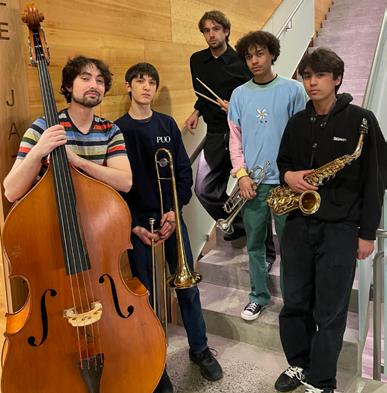

Guitarist Matt Stevens, right, will be the guest performer with Princeton’s Small Group 1. Members of Small Group 1 are, from left: bassist Ari Freedman, Carmel, CA; trombonist William Parson, Frederick, MD; Alex MacArthur; trumpeter Theodore Peebles, Philadelphia; alto saxophonist Milan Sastry, Los Angeles. (Not pictured: pianist Alex Levin, Los Angeles).
with Small Group 1 at the Princeton Jazz Festival on Saturday, April 12.
Ector calls MacArthur “a quick study. He began studying with me without formal drum lessons. He possessed raw talent and was a delight to teach—a dedicated student catching onto the concepts of jazz drumming naturally.”
The drummers who are inspirational to MacArthur, in addition to Blakey, include Roy Haynes Tony Williams, Philly Joe Jones, and Sonny
Payne. Among current drummers, his favorites are Brian Blade and Marcus Gilman. The latter, he pointed out, “is Roy Haynes’ grandson. I saw him play with Chick Corea. He’s very innovative. He plays with two high hats—one for the front and the other for the back. Brian Blade is a little more mainstream. He’s very expressive, dynamic, with amazing phrases, a very joyous player. I have tried to emulate his style.”
Princeton’s Music Department
offers a Certificate in Jazz Studies. As Rudresh Mahanthappa, Director of Jazz, explained to Jersey Jazz’s Jay Sweet in a previous article (December 2021), “We are a music department. We are not a conservatory. What I am trying to do is provide an enriching experience for people who still want to play.” (Two Princeton students, saxophonist Isaac Yi from Leonia, NJ, and trumpeter Gabriel Chalick from Naples, FL, were NJ Jazz Soci-
ety Scholarship winners in 2024).
MacArthur, a senior history major, will continue his history studies in graduate school. “I won’t be a professional drummer,” he said, “but I plan to keep playing drums.”
The Festival presents four afternoon free concerts and a ticketed concert in the evening in the university’s Richardson Auditorium. Three of the afternoon concerts are played by student groups, joined by a guest professional. The final afternoon concert is a faculty septet.
The guest in MacArthur’s Small Group 1 at 3:30 p.m,. is guitarist Matt Stevens, who received a Grammy Award for co-producing and performing on Terri Lyne Carrington’s Candid album, New Standards, Vol. 1. An Associate Professor at Berklee College of Music, Stevens explained that the guest performers arrive a couple of days before
the festival and practice four or five tunes with the student musicians.
The other student concerts are:
Small Group X with tenor saxophonist Roxy Coss as guest performer at 1 p.m. and Small Group A featuring vibraphonist Warren Wolf at 2:15 p.m.
The faculty septet includes Mahanthappa on alto saxophone, Ted Chubb on trumpet, Michelle Lordi on vocals, Miles Okazaki on guitar, Sumi Tonooka on piano, Matthew Parrish on bass, and a drummer to be announced. The evening concert at 8 p.m. presents Princeton’s Creative Large Ensemble directed by Darcy James Argue and features special guest Etienne Charles on trumpet. —sanford josephson
: Richardson Auditorium is located in Alexander Hall on the Princeton campus. For more information or to order tickets to the evening concert, log onto princeton.music.edu.

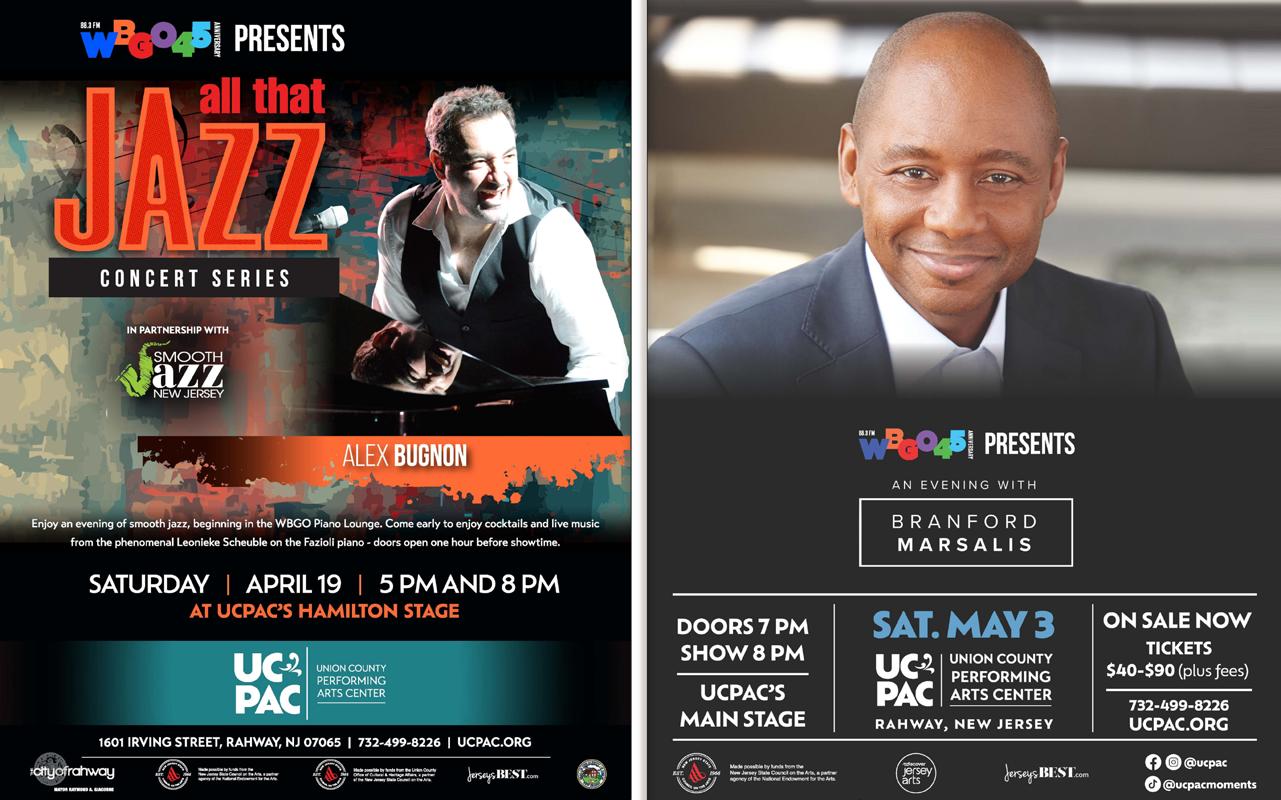
BY BILL CROW

In 1952 I was playing two weeks with Teddy Charles’ trio at the Town Tavern in Toronto when Dizzy Gillespie came into the Colonial Tavern, just a block away. Dizzy had a quintet, with (pianist) Wynton Kelly, (saxophonist) Bill Graham and (drummer) Al Jones. Percy Heath had been his bass player, but Percy had just left Dizzy to join the Modern Jazz Quartet. Dizzy had only booked a week at the Colonial, and he put out the word in Toronto that he needed a bass player. A local trumpet player, Herbie Spanier, also played a little bass, and he took the job.
Herbie had been playing mostly trumpet jobs, and his hands were too tender for the tempos Dizzy was playing. Teddy Charles, who knew
Bill Crow is a freelance musician and writer. His books include Jazz Anecdotes, Jazz Anecdotes: Second Time Around, and From Birdland to Broadway. This column is reprinted with permission from Allegro , the monthly magazine of AFM Local 802.
Dizzy, found out that Herbie was playing with blisters, and he suggested that I should go over between our sets and play some bass with Dizzy. I managed to get in a couple of tunes every night, and at the end of the week Dizzy said to me, “I have a one-nighter in Buffalo on your day off. Why don’t you come down and play it with me?” I agreed, and I took the train to Buffalo the next day.
The job was on a basketball court. We were on a low bandstand in the middle of the floor, with an upright piano for Wynton. Al Jones’ drums sounded very loud in that space, and I had trouble hearing the piano, but I got through the job okay.
When we finished, Bill Graham came out of Dizzy’s dressing room and said, “Dizzy wants to know how much he owes you.” I had never negotiated a salary with anyone before and said, “Just tell him to pay me
what he pays you guys.” Bill said, “No, you’ve got him over a barrel. Tell him what you want.” I asked for 30 dollars, and Bill went back and got it for me. Then he said, “Dizzy wants to know if you want to stay on the band.” I told him I couldn’t strand Teddy Charles without a bass player, and so I couldn’t do it. I was a little afraid of Dizzy, and I had only been playing the bass for a year, so I wasn’t sure I could handle the job. Later on, I found out what a sweetheart Dizzy was, and I regretted having had to turn down his offer.
Dave Frishberg once told me about his first night playing for Ben Webster. After the first tune they played, Ben said to Dave, “Reminisce.” Dave gave Ben a questioning look, and Ben repeated, “Reminisce. At the piano. While I talk to the audience.” So, Dave reminisced.
When I first moved to New York City in 1950, I discovered the old Roseland building. Roseland was a big second floor ballroom between Broadway and Seventh Avenue that had marquees on both sides of the building. The one on the Broadway side was huge, and it spelled out in large black letters: THE XAVIER CUGAT ORCHESTRA featuring ABBE LANE. On the Seventh Avenue side, a smaller marquee proclaimed: XAVIER CUGAT with ABE LANE.
Pete Hyde sent me this: “In the 1960s I spent a few summers in the Catskills, playing in the resident show bands of a few different hotels. One year was in the Pines Hotel, with John Danser’s nine-piece show band. One of the weekends, the hotel was taken over by a TV crew that was filming the local ‘Miss New York’ portion of the annual ‘Miss USA’
contest. It was not the highest-budget production in the world, but it held a certain excitement for us. Nobody in our band had ever played in a live TV broadcast before, and that included our bandleader, John.
He found himself equipped with a set of earphones that was connected to a number of directors and producers who were constantly making decisions on the run, and relaying them to each other and to people on the line who would need to keep abreast of these decisions.
“We band members had no earphones, and could only follow John’s vocal orders, given at a fairly loud volume, in spite of the open mikes in front of each section on the bandstand. During a lull in the action, someone on John’s line told him to play a tune. Someone else then clarified it by asking for a jumpy tune. At that point, it appears we weren’t fast
enough in getting our charts up. John’s orders were rescinded, just a little too late. Here’s what we heard from John: ‘OK, guys, get out number 11. We’re going to play. C’mon, let’s go! One! Two!... No! Get up 23. C’mon, hurry up! One! Two! One Two Three Four! DON’T PLAY!’
I’d give almost anything to hear a playback of that broadcast.”
Steven Cerra posted this item on Facebook: “When drummer Shelly Manne opened The Manne Hole in November 1960, Monty Budwig, his long-time bassist, had moved to San Francisco to work with pianist Vince Guaraldi. Shelly auditioned and hired a very young Chuck Berghofer as his new bassist. In his enthusiasm, Chuck raced some of the tempos a bit. Between tunes, Shelly looked at Chuck and said in a voice that only he and Chuck could hear: ‘Wait for me.’”


for more Sandy info
BY JOE LANG
In the early 1960s, the Canadian Broadcasting Corporation (CBC) produced a series, the “CBC Jazz Workshop”. One of the groups featured was Vancouver-based The Dave Robbins Big Band. The band featured many of the players on the band from The Cave, a Vancouver nightclub led by saxophonist Fraser MacPherson who is one of the featured soloists on the Robbins band. Producer Cory Weeds obtained tapes of the Robbins band from Guy MacPherson who was writing a biography of his father, Fraser MacPherson: I Don’t Have Anywhere to Go - I’m Already Here, published by Weeds. The Robbins tapes have now been released by Weeds as Happy Faces (Reel to Reel - 015). This is an exceptional band featuring the cream of the crop of jazz players from the Vancouver area, most of whom, other than Fraser MacPherson and bassist Don Thompson, are probably unfamiliar to most NJJS members, but
who demonstrate on this recording their high quality. The arrangements are well conceived and executed, with many sparkling solos sprinkled throughout. There are 12 full selections plus the Jazz Workshop Theme (“March Winds Blow”) that bookends the program. Most of the selections are originals by the band members, the exceptions being Sonny Stitt’s “Happy Faces,” Kenny Dorham’s “Asiatic Raes” and “Spring Is Here.” Happy Faces is a totally satisfying release that will make you have a happy face as you dig it. cellarlive.com
Naptown Sound (Jazzville Records) by the Steve Allee Big Band is a scintillating album of nine tunes, eight Allee originals plus Wes Montgomery’s “Full House.” They are inspired by the Indianapolis jazz scene, which gave us artists such as Noble Sissle, Montgomery, J.J. Johnson, Slide Hampton, Freddie
Hubbard, and Leroy Vinnegar. The band, conducted by John Clayton, plays 19 pieces plus guest appearances by clarinetist Frank Glover, trumpeter Jeff Conrad, and guitarist Dave Stryker. Allee, an Indianapolis native, devoted each selection to various aspects of the Indianapolis scene, the players, clubs, and neighborhood where jazz was a major presence. His charts are exciting, well played by the ensemble, and leave ample space for the fine soloists who are on the band. Given the wealth of jazz talent who hailed from what the locals call Naptown, it is fitting that Allee chose to bring this project to brilliant fruition. steveallee.net
Saxophonist Jin Pureum conceived and organized an all-female saxophonist front line of herself on alto or soprano sax, Erena Terakubo on alto sax, Lauren Sevian on baritone sax, and Chelsea Baratz on tenor sax

with a rhythm section of Steve Ash on piano, Joey Ranieri on bass, and Pete Van Nostrand on drums. The band is called The Empress, and the initial release is Square One (Cellar Music - 52524). The 11-song program includes Cedar Walton’s “Bolivia,” Benny Golson’s “Stablemates,” John Coltrane’s “Mr. Syms,” Horace Silver’s “Nica’s Dream,” John Lewis’s “Milestones” and Oliver Nelson’s “Yearnin’” plus two originals by Michael Lutzier
who also supplied all but one of the excellent arrangements. The ensemble has a large sound, and each of the sax players has wonderful tone and control as well as limitless creativity. Special mention should also be made of several sparkling solos by pianist Ash. The Empress is a group well named as their music has a royalty about it that draws you right in and holds you until the last notes. cellarlive.com
In the later part of his career, guitarist Wes Montgomery was recording albums that were more in the pop/ smooth jazz vein with him playing mostly pop tunes with big band or orchestral backing. More Amor: A Tribute to Wes Montgomery (Chicago Jazz Orchestra - 252000232) by the Chicago Jazz Orchestra featuring Bobby Broom is inspired by this period of Montgomery’s recorded output. The 10 selections have charts by Charley
Harrison (“Road Song,” “What the World Needs Now Is Love” and “”Baubles, Bangles and Beads”) Tom Garling (“Four on Six,” “West Coast Blues” and “Fried Pies”) and Alex Brown (“Somewhere” and “Dreamsville”), plus “More, More Amor” arranged by Don Sebesky, and “Boss City” arranged by Oliver Nelson. The latter two were transcribed by CJO leader Jeff Lindberg. On six of the tracks, a full string section is added to the big band. Broom is a fine guitarist who does not try to channel Montgomery, providing his personal take on each tune. The full package should satisfy both the more jazz-oriented listeners as well as those who find jazz a bit too intense for their tastes. cjomusic.net
There are many fine college jazz programs most of which have outstanding student jazz ensembles, especially big bands. One such big band is the
University of Nevada Las Vegas Jazz Ensemble 1. You can discover just how accomplished it is on Let the Good Times Roll (Vegas Records - 1027). The 12-song program was recorded throughout the 2023-2024 school year, and includes such tunes as Louis Jordan’s “Let the Good Times Roll,” Oscar Pettiford’s “Bohemia After Dark,” two lesser heard tunes by Duke Ellington—“Chinoiserie” and “Braggin’ in Brass,”—and three originals by band members. Most of the arrangements are by UNLV students or alumni. These young musicians really nail the material with help from occasional guest artists like trumpeter Kenny Rampton, trombonists Curt Miller and Israe Butler, baritone saxophonist Adam Schroeder, and vocalists Clint Holmes, Naomi Mauro, and Laura Taylor. There is a lot of talent on display here and it bodes well for the future of jazz. vegasrecords.org
Lil Hardin Armstrong is probably best known as Louis Armstrong’s second wife, but she was also an outstanding jazz pianist and songwriter. Pianist Calli O’Doherty became fascinated by this unsung jazz legend while a student at Queens College. As a result, she has turned her attention to Armstrong on Bluer Than Blue: Celebrating Lil Hardin Armstrong (Outside in Music - 2412). She addresses nine Hardin tunes, such as “Let’s Call It Love,” “Clip Joint,” and “Let’s Get Happy Together”, among others. She is supported by tenor saxophonist Nicole Glover, bassist Tamir Schmerling, and drummer Cory Cox. Tahira Clayton and Michael Mayo add some appealing vocals on most of the tracks. O’Doherty’s stride solo take on “Struttin’ with Some Barbecue” is dazzling. Armstrong would surely have been pleased with this tribute. cailimusic.com
Drummer Lee McKinney has released an album of original tunes, Reflection in Two Shades (Summit - 819) that includes material inspired by various jazz musicians as well as members of his family, including his dog. Among those referenced in the notes are Jackie McLean (“Lenwood”), Philly Joe Jones (“The Bebop Vampire”), Airto Moreira (“Samba de Lá Vamos”), Charlie Parker (“Bird’s Eye View) and Art Blakey (The Jazz Messengers”). The songs are varied in feeling, each having a distinctive melody and the tempos are as lushly balladic as “Rebecca,” a tune for his daughter, to the intensely hard boppish, “The Jazz Messengers.” The band has Greg Abate on alto sax, soprano sax and flute, Matt Cooper on piano, Chris Berg on bass, and McKinney on drums. Each are impressive soloists. McKinney has come forth with a winning release that is consistently interesting. summitrecords.com
Whenever Harry Allen and Rossano Sportiello play together, there is a natural blending of musical minds that always produces special results. On It Takes Three (Night Is Alive0014) they are joined by drummer Bryan Carter for a 10-song program that has seven standards, “Runnin’ Wild,” “I Can’t Get Started,” “Exactly Like You,” “I’ve Heard That Song Before,” “It’s You or No One,” “Unforgettable,” and “You’re My Everything,” plus Sportiello’s “It’s Sunny in Cape Cod,” Allen’s “Each and Every Wednesday” and Arnett Cobb’s “Kathy’s Blues.” Allen and Sportiello excel at all tempos. Carter is a steady timekeeper, creatively adds accents, and performs a pleasant vocal on “Unforgettable.” One thing that you can be sure of when these men meet is that there will be a consistent sense of swing underlying their every phrase. It Takes Three proves that three is plenty when the three are of this quality. nightisalive.com
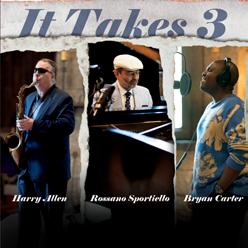
Small group swing is alive and well in Europe. At the forefront of this scene is pianist/saxophonist Chris Hopkins. On CHRIS HOPKINS meets the YOUNG LIONS, Live, Vol. 1 (Echoes of Swing - 4514), Hopkins, on piano, is joined by Thimo Niesterok on trumpet, Tijn Trommelen on guitar and vocals, Caris Hermes on bass, and Mathieu Clement on
drums. They perform a program of 10 standards, including “Wrap Your Troubles in Dreams,” “Indiana,” “Until the Real Thing Comes Along,” and “Rockin’ Chair”. Niesterok’s trumpet rings clear; Trommelen is fine on rhythm guitar and adds several nice vocals; Hermes and Clement are wonderfully supportive with occasional tasty solos; and Hopkins is his usual creative presence on piano, superb as accompanist and soloist. The American born and raised Hopkins has been in Germany for about 30 years and has developed an ear for selecting the best the young talent from Europe. Niestrok and Hermes are German, Trommelen from the Netherlands, and Clement from Luxembourg. These Young Lions roar out jazzily! shop.hopkinsjazz.com
Horns Locked (Cellar Music - 60124) finds the two tenor sax duo of Nick Hempton and Cory Weeds backed
by the organ of Nick Peck and the drums of Jesse Cahill for eight tunes, jazz classics like Moody’s “Last Train from Overbrook”, Dexter Gordon’s “Soy Califa” and Gene Ammons’ “The One Before This;” a pair of standards, “Polka Dots & Moonbeams” and “When You’re Smiling;” plus one original from Weeds and two by Hempton.. Two sax front- lines are a staple of the jazz tradition with pairings like Al Cohn and Zoot Sims, Dexter Gordon and Wardell Gray, and Gene Ammons and Sonny Stitt among the most noted. Hempton and Weeds fit nicely into this genre as they swing hard and consistently challenge each other, with Peck and Cahill offering strong support. Four of the tracks were recorded live at Frankie’s Jazz Club in Vancouver, while the other four were captured at Aero Studio. The two-tenor pairing was seren-
dipitous as Hempton, based in New York City, had a gig with Peck and Cahill at Frankie’s where Weeds was in the audience and was asked to sit in. The sparks that flew between Hempton and Weeds were such that they’ decided to go into the studio to create enough music to fill out an album. This turned out to be a gift for those who like swinging mainstream sounds with a touch of soul jazz present. The best term to apply here is joyous jazz. cellarlive.com
In the mid-1980s, Irish jazz pianist
Jim Doherty composed music that was intended for a dance piece combining jazz and ballet. It was titled Spondance (Liva Records - 2403). Ultimately, Doherty decided to record the music, and opted to do so in Los Angeles with six premier West Coast musicians augmenting himself and the brilliant Irish guitarist Louis
Stewart. Trumpeter/flugelhornist
Bobby Shew recruited alto saxophonist Bob Sheppard, tenor saxophonist Gordon Brisker, trombonist Randy Aldcroft, bassist Tom Warrington ,and drummer/percussionist Billy Mintz to fill out the octet. The liner notes describe the storyline of the dance piece as originally conceived and the roles played by the various instruments. Understanding that enhances the listening experience, but is not necessary for enjoyment of this music on its own. Doherty has created engaging themes and this band executes his arrangements with precision. Each musician has superb solo interludes. It is a blessing that Livia Records owner Dermot Rogers has undertaken a project of rereleasing the recordings of Louis Stewart, and Spondance is a nice stop along the Stewart musical path. liviarecords.com
Australian vocalist Michelle Nicolle has been a professional performer for about 30 years, but The Silent Wish (Purple Lead Music - 2401) is her first release in the United States. This is her first duo album, on which she is accompanied by guitarist Larry Koonse, a fixture on the Los Angeles scene. Nicolle imbues her vocalizing with a jazz sensitivity that makes each of the 10 selections sound uniquely hers. With the exception of “I Hope I Never” by New Zealand singer/songwriter Tim Finn, and her own “Putting It Off,” the program is replete with quality standards, such as “When Your Lover Has Gone,” “I’m Glad There is You,” and “With a Song in My Heart”. There is always a controversy about whether or not a vocalist is a jazz singer. Nicolle leaves little room for controversy as she definitely approaches her material like an instrumentalist. Koonse is a perfect partner
for this collection. He is sensitive and understands the art of accompaniment, but his excellent jazz chops are always evident. Nicolle is a singer that you will want to hear more from, but few of her prior recordings are available in the States. michellenicolle.com
Whenever a new album is released by Lorraine Feather, it is sure to contain lyrics that are well-crafted, intelligent and challenging for the listener. Fortunately, as she does on The Green World (Relarion - 210212), she usually includes the lyrics and an explanation of the background of each of the selections in her liner notes. These are not songs to be listened to casually. Without her notes, they can be confusing. The music does not follow the usual popular song format, rather it provides a setting rather than a melody. The music for four tunes are by Eddie Arkin, two each by Russell Fer-
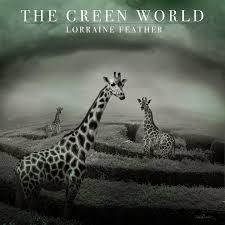
rante and Shelly Berg, and one each by
Michael Valerio and Arturo O’Farrill. Each of them also provided arrangements. Feather handles the vocals deftly. It is unlikely that these are the kind of songs that would be picked up by other singers, but she has shown over several albums that she can create a musical world that is fascinating for anyone with the perseverance to listen carefully to what she offers to her listeners. lorrainefeather.com


In 1976, vibraphonist Roy Ayers released an album on the Polydor label called Everybody Loves the Sunshine. According to National Public Radio’s Lars Gotrich, it “sent a ripple throughout funk space; a staple of his live set for decades.” The title track was written by Ayers, and, in a 2017 interview with The Guardian, he recalled the excitement after the recording’s release. “It was so spontaneous. It felt wonderful,” he said. “And, I knew exactly how I wanted it to sound: a mix of vibraphone, piano, and synthesizer.”
Ayers, who passed away on March 4, 2025, at the age of 84, was a major influence on rap stars such as Dr. Dre, Mary J. Blige, and Tupac
Shakur, all of whom performed “Everybody Loves the Sunshine.”
In an interview with The New York Times last year, vibraphonist Warren Wolf called Ayers “kind of a godfather of the contemporary vibes. He brought a different element to his sound, compared to everybody else. Roy’s music is something you can jam to and have a good time, or you can just sit back and hang out with it in the background. The vibe is always strong.”
Ayers was born in Los Angeles on September 10, 1940. When he was five years old, his parents took him to see Lionel Hampton, who gave him a set of mallets. Ayers studied music and music history at Thomas Jeffer-
son High School with music instructor, Samuel R. Browne, whose other students included tenor saxophonist Dexter Gordon and bassist Charles Mingus. Ayers’ first album as a leader, West Coast Vibes, was released on the United Artists label, when he was 23.
In 1966, he joined a band led by popular jazz flutist Herbie Mann and appeared on 11 Mann albums. After also recording several albums as a leader, Ayers created the Roy Ayers Ubiquity band in 1970. It propelled him to stardom. From 1970-77, the band released 11 albums on the Polydor label.
In a November 2023 article called Roy Ayers: A Retrospective, Jason Elias of AllAboutJazz described Ayers
as “a master of many musical styles and genres, from acid-jazz, jazzfunk to romantic ballads and dance tracks. While many of his contemporaries seemed to fail when they tried different sounds, Ayers always made sure musicality and identity were apparent in all of his work.”
On Facebook, saxophonist Dave Mullen wrote that he “was honored to record and perform with Roy Ayers a number of times, for which I truly feel blessed. I can’t underestimate the impact, as a composer, he had on me.”
Todd Barkan, owner of Baltimore’s Keystone Korner jazz club, also posting on Facebook, said, “Roy Ayers will always occupy a very warm and bright spot in our hearts. He levitated our Keystone stage in 2019, 2021, and 2022. Personally. he’s been a constant joy to work with since the early 1970s.”
Ayers is survived by his wife, Argerie; two sons, Mtume and Nabil; a daughter, Ayana; and a granddaughter.
Most Famous for Her Hit, ‘Joltin’ Joe DiMaggio’
In 1941, the Les Brown Band spent the whole summer at Log Cabin Farms in Armonk, NY. Its 17-year-old female vocalist, Betty Bonney, who had succeeded Doris Day in May, gave the band its first hit, “Joltin Joe DiMaggio”. Bonney, described by The Washington Post’s Adam Bernstein as “a favorite of jitterbuggers and other musical hepcats of the swing era,” died on January 29, 2025, at a retirement home in Calabasas, CA, at the age of 100.
Nineteen forty-one was the year of DiMaggio’s 56-game hitting streak, and Alan Courtney, a New York disc jockey, and Ben Homer, the band’s arranger, wrote the DiMag-
gio song. When Bonney sang it at the Armonk club, Brown told Newsday in 1990, band members goofed around with baseball gloves, bats, and caps. The band, he said, “got caught up in the streak. We would announce it from the bandstand every night if Joe had gotten another hit, or if he was coming to bat late in the game still without a hit.”
The song began with Bonney asking, “Hello, Joe, whaddaya know?” Clarinetist Ben Most, playing DiMaggio, responded with, “We need a hit, so here I go.” The key stanza, sung by Bonney, was: “He started baseball’s famous streak that got us all aglow. He’s just a man and not a freak, Joltin’ Joe DiMaggio.” The single, released in September 1941 as a 78 RPM record on the Okeh label, was Billboard Magazine’s 93rd best-selling single of the year.
Other songs recorded by Bon-
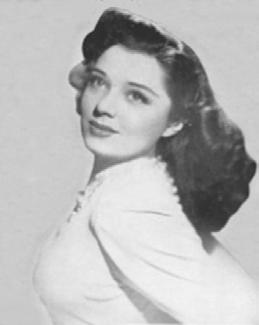
ney with the Brown band included “All That Meat and No Potatoes” and “He’s 1-A in the Army (and He’s A-1 in My Heart).” After leaving Brown, she sang with bands led by Jan Savitt, Jerry Wald, and Frankie Carle. She also made solo recordings for RCA Victor under
her full name, Betty Jane Bonney. In 1949, Bonney performed in a national tour of the Broadway musical, High Button Shoes, and in 1950, she was hired by bandleader Sammy Kaye, who changed her name to Judy Johnson. She was a frequent guest, partnering with male vocalist Bill Hayes, on Sid Caesar’s popular ‘50s television program, Your Show of Shows.
After her 1954 marriage to Merv Griffin Musical Director Mort Lindsey, her career slowed down. She continued appearing in musical theater and was the stand-in rehearsal singer for her husband’s orchestra during Judy Garland’s 1961 comeback concert at Carnegie Hall.
Survivors include a daughter, Bonney from her first marriage to Douglas Broyles, Jr.; two sons, Trevor and Steve Lindsey; and three stepchildren.
THANK YOU and welcome to all who have recently joined or renewed their memberships. We can’t do what we do without you!
Your membership is vital to NJJS’s mission to promote and preserve America’s great art form— JAZZ!
org
NEW MEMBERS
Judi Ayre SPRINGFIELD, NJ
Everett Smith FANWOOD, NJ
Christopher Berry WOOD RIDGE, NJ
Marian Calabro HASBROUCK HEIGHTS, NJ
Nancy Goebel MORRIS PLAINS, NJ
Joseph Kajewski BASKING RIDGE, NJ
Al Kuehn MAPLEWOOD, NJ
Reed MacKenzie CHASKA, MN
Glenn Makos SOUTH ORANGE, NJ
Terence Mark NEW YORK, NY
Heather McMahan ROSELLE PARK, NJ
Nancy Miller JERSEY CITY, NJ
Terrence Smith MORRISTOWN, NJ
Stephen Wehrle FANWOOD, NJ